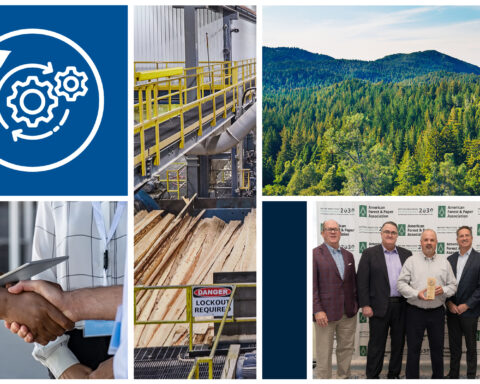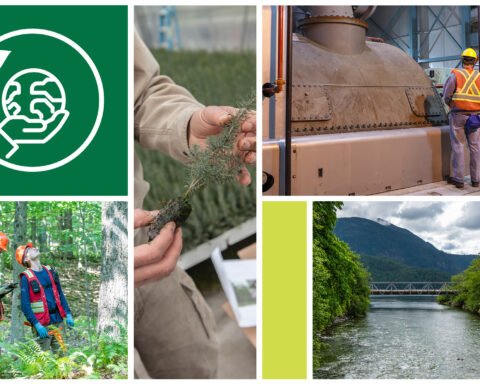The global stocktake finalized at the 28th United Nations’ annual conference on climate change, or COP28, took place from November 30 to December 12, 2023, in Dubai, United Arab Emirates. It marked the first time the international community assessed its collective progress in reducing greenhouse gas emissions since the Paris Agreement in 2015. The findings confirmed that without increased climate action, the world could face between 2.5C (4.5F) and 2.9C (5.2F) of warming above preindustrial levels. Emissions must fall by 42% by 2030 to hold warming at 1.5C (2.7F).
On this basis, the global community reached a consensus to:
- triple renewables and double energy efficiency, while transitioning away from fossil fuels.
- support climate innovation and encourage cross-border and inter-generational collaboration for sustainable social and economic development.
From pledge to action
With a trajectory and plan defined, we now need to fully tackle the crux of the issue, starting with the 70% of greenhouse gas (GHG) emissions, which are energy related.
From the way we source energy to the way we use it across buildings, grids, mobility, and industry, there is no time to waste in embracing every pathway to decarbonize, for the sake of planet, people and yes, the economy too.
55% emission saving potential based on existing solutions
Contrary to popular belief, decarbonization of demand accounts for more than half of global emissions reduction, to reach net-zero by 2050, with supply decarbonization accounting for the rest. On the demand side, efforts are focused on demand optimization (changing consumption patterns) and process changes (including electrification of the energy system). These transformations can result in significant carbon and energy savings, while also benefiting consumers.
For example, in buildings, technologies such as heating electrification and active energy efficiency solutions have the potential to lower carbon emissions by 2030, generating up to 70% carbon savings for building dwellers, and up to 30% energy savings with a return on investment within 3-5 years.
In the industrial sector, automation and digital tools can optimize processes, productivity, performance, and energy usage, resulting in a 20% reduction in electrical, instrument, and control capital expenditure and a 10% improvement in process energy usage.
Scaling the adoption of these existing solutions is crucial to achieve the goal of doubling the rate of energy efficiency by 2030.
Most of the global grid is unfit for renewables today
It is estimated that wind and solar photovoltaics (PV) will contribute over 80% of the global power capacity increase in the next two decades. To accommodate for this clean energy push, around 80 million kilometers of power lines need to be added or replaced by 2040, which is equal to the entire existing global grid.
Currently, there are approximately 3,000 GW of renewable power projects waiting in grid connection queues, with half in advanced stages. This backlog is five times the solar PV and wind capacity added in 2022, indicating that grids are hindering the transition.
To further the tripling of renewable energy, distribution grids must be modernized, and decentralized. Innovative funding models, like Energy-as-a-Service can help overcome the challenge of upfront capital investments and make energy resilience more accessible.
For example, AlphaStruxure’s Energy as a Service model, pioneered by Schneider Electric and the Carlyle Group, combined with EcoStruxure Microgrid solutions, helped Montgomery County become a leader in fleet electrification and a sustainability archetype for local governments across the United States — all with zero capital outlay.
The Brookville Smart Energy Bus Depot now boasts a 6.5 MW microgrid with on-site solar, battery energy storage, and natural gas generation. Moreover, Schneider Electric’s EcoStruxure solutions ensure that the buses can operate even during main grid outages, providing peace of mind for the County’s 1.1 million residents.
138 million new jobs to be created out of the energy transition
To seize this opportunity, we need to re-train and upskill people. This requires a deliberate effort to include public stakeholders, civil society groups, youth, and women to be part of the solution.
In addition, close to 2 billion people lack access to clean, reliable electricity. Equipping individuals and organizations with knowledge and tools for sustainable clean energy infrastructure has a positive multiplier effect across various socio-economic dimensions, including livelihood, health, education, security, and women’s empowerment.
As part of Schneider Electric’s sustainability impact goals, the company is aiming to connect 50 million people to clean and reliable energy by 2025, and 100 million people by 2030. As well as training 1 million people in energy management.
Since 2009, Schneider Electric has provided clean energy solutions to more than 40 million people, invested in 26 companies, trained 430,000 people, and supported more than 5,600 entrepreneurs with the help of 7,000 trainers globally. This progress would not have been possible without close partnerships with local public sector stakeholders and civil society groups.
Impact companies at the forefront
While there is momentum from the private sector to support climate action, only 8% of corporate leaders have the necessary digital tools to achieve their net-zero targets. Companies often underestimate the impact of electrification and enhanced automation in their sustainability plan.
Schneider Electric serves as an example of a company driving sustainability and reaping the benefits. It has consistently ranked at the top of worldwide ESG ratings for over a decade and was named the World’s Most Sustainable Corporation in 2021 by Corporate Knights. What is more is that Schneider Electric has seen its sustainability-led strategy contribute tripling its annual revenue from €9bn in 2003 to €34bn in 2022.
Not only are Schneider’s Net-Zero targets validated by the Science Based Targets initiative (SBTi), fully aligned with their Corporate Net-Zero Standard, but it has also implemented a comprehensive and measurable Environmental Social and Governance (ESG) plan that is monitored at the executive level and embraced at all operational levels, and showing concrete quarterly progress.
An example of how this translates is Schneider Electric’s flagship program Zero Carbon Project, which aims to halve supplier CO2 emissions by 2025. The initiative provides capacity building, resources, and expert support to program participants, helping them set and achieve their carbon reduction targets while advancing decent work standards across the supply chain. To date the company has achieved almost 25% reduction, nearing the halfway target.
By aligning environmental, social, and business strategy, Schneider Electric intends to live up to Impact Company principles:
- Do good to do well and do well to do good: Business and financial performance enable environmental and social impact. Sustainability is a source of performance and growth.
- Bring everyone along: Positive impact can only happen if you are not a lonely leader, if you foster a movement of global goals and local efforts to leave no one behind.
Schneider Electric’s mission is to be the digital partner of sustainability and efficiency for homes, buildings, data centers, infrastructure, and industries, by combining energy technologies, real-time automation, software, and services.
Find out more about how to implement an energy and sustainability strategy here. For more information on acceleration pathways for corporates post-COP28, visit here.







